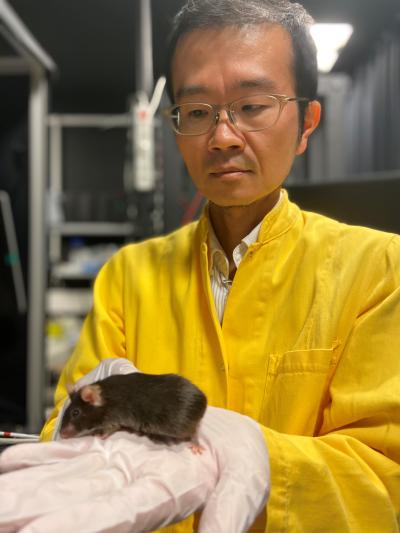The eye registers motion in a hitherto unsuspected way
This was revealed with the help of a “homing” virus. And the technique can also be used to study other mammalian senses.
When it comes to registering movement, the visual systems of mammals work quite differently than previously thought by science.
This is the finding of a Danish-Israeli research project which was recently published as an article in the scientific journal Neuron.
The project received funding from the Lundbeck Foundation and was headed by Associate Professor Keisuke Yonehara from the Danish Research Institute of Translational Neuroscience, DANDRITE, at Aarhus University.
Researchers studied animals in the lab, and what they were able to demonstrate ‘fundamentally changes our understanding of mammals’ visual perception of movement. Both when objects in our field of vision are in motion, and when we ourselves are in motion,’ Yonehara explains.
The technique used to make the discovery involved lab mice and a cunning combination of a homing virus and a laser scanning microscope.
Keisuke Yonehara and his colleagues constructed a virus solely able to penetrate specific cells in the retinas of the mice. Here, the virus deposited a fluorescent molecule.
Around three weeks after the animals had received the injection of the homing virus, they were put down. The researchers then removed their eyes and carefully detached the retinas.
These were then studied under a laser scanning microscope, and the researchers were able to see reactions in the retinal cells which had received fluorescent molecules aided by the virus. Yonehara explains:

‘Mice and other mammals have several hundred different types of cell in their retinas. The cells we were concentrating on are all linked to visual observation of motion. And in the experiments, we were able to see that mice – and most likely humans, too – make these fundamental observations in a way that, from a purely biological point of view, differs radically from our previous assumptions.’
This is interesting in itself, but as Yonehara says: ‘It may help us tailor viruses that can be used in similar ways to gain a basic understanding of how other senses in the brains of mammals work, such as taste, hearing and perception of colour. And this is the wider perspective of our finding.’
It all happens in the “transmitter”
Every one of the billions of neurons in the brains of humans and other mammals have “receptors” and “transmitters” in the cell body:
“Receptors” – dendrites – collect signals from other cells.
“Transmitters” – axons – then release a special type of molecule, a so-called neurotransmitter, which forwards signals from the neuron body to the dendrites of a neighbouring neuron.
The signals are then forwarded to a third neuron – and a fourth – in the same way. And so it continues.
Myriads of signals are constantly transmitted in this way – in fractions of a second – between the neural networks of our brains.
These networks handle many different and vital tasks. Among other things, they ensure that our senses work as intended.
And the better we understand how these networks work, the better equipped we are to design new drugs for brain-related diseases.
Up to now, science has assumed that the “receptors”, or dendrites, take on the key role in the mammalian brain’s visual perception of motion. However, as Keisuke Yonehara explains:
‘When we analysed the retinal cells we had injected with fluorescent molecules under the laser scanning microscope, we could see that this is not the case at all. The way in which the animals’ retinas registered, and thus calculated, motion was the product of the processes in the cells’ “transmitters” – the axons. And this surprised us a lot.’
But how can retinas removed from dead mice be used in experiments of this kind?
Yonehara explains that the retinas can be used for up to eight hours after the animal dies – provided, of course, that they are removed and stored under the right conditions.
